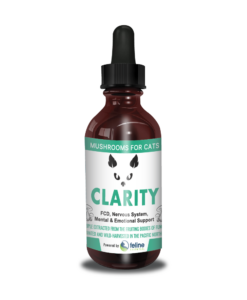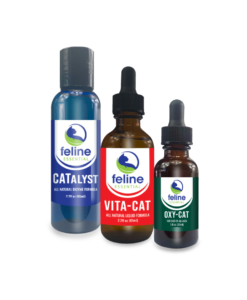We used to be the people that microwaved absolutely everything. Something needs cookin’? Microwave it. Something needs thawing? Microwave it. Cat food needs heating up? Micro…. Wait.
For those of us who feed a species appropriate diet to our cats, remembering to thaw it out before it’s feeding time can be a frustrating learning experience. We were used to just grabbing a bag or a can of food and pouring it in a bowl – so this new need for preparation was… different.
To preserve fresh cat food, it needs to stay in the freezer. Which means it needs time to thaw in the fridge before meal time. There were so many days that we forgot this important step in fresh feeding and woke up to a hard chunk of frozen food and hungry kitties. Our first reaction was to throw it in the microwave on “thaw” setting… breakfast ready in no time! And we did this a couple times…
But the difference in the look and smell of the food was very noticeable, so we started researching this.
The Microwave Effect
It turns out that the “microwave effect” is doing more than just killing nutrients in our foods. Thit alone should be reason enough to not use it – and when it comes to our cat’s food, killing these nutrients by microwaving their raw food is so counter-productive. Why waste all the time and money on fresh food if we’re just going to ‘kill’ it? We might as well go back to kibble if we wanted our cats to eat nutrient depleted foods.
But guess what? There are even more reasons why you don’t want to microwave your cat’s food (even if it is processed).
According to Primal Pet Food, a pioneer in making commercial raw pet food: “Never microwave any pet food. Microwaves cause the fat molecules to radically change, making fats less digestible, and ultimately, they can become harmful to your pet’s long-term health.“
This type of change to the fats of our cat food can actually cause them to have pancreatitis. We definitely don’t want that!
Another reason to not microwave your cat’s food is because plastic containers can be super dangerous. A researcher at John Hopkins University said, “Phthalates are environmental contaminants that can exhibit hormone-like behavior by acting as endocrine disruptors in humans and animals. If you heat up plastics, you could increase the leaching of phthalates from the containers into water and food. In general, whenever you heat something you increase the likelihood of pulling chemicals out.”
How Do I Thaw My Cat’s Food Then?
If you have cat food that needs to be thawed for meal time – or warmed to ‘mouse temperature’ (as we like to say), simply put the food in a glass dish or bowl and place it in warm water. Yes – this will take more than 30 seconds (we say plan for 5-10 minutes), but it will protect the food’s nutrients, preserve the healthy fats and eliminates the risk exposing our kitties – or our home to leaching chemicals! Violá!




Recent Comments